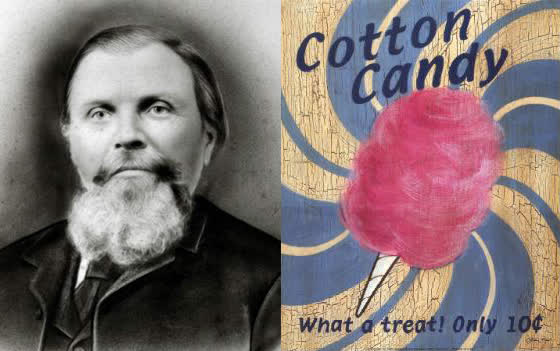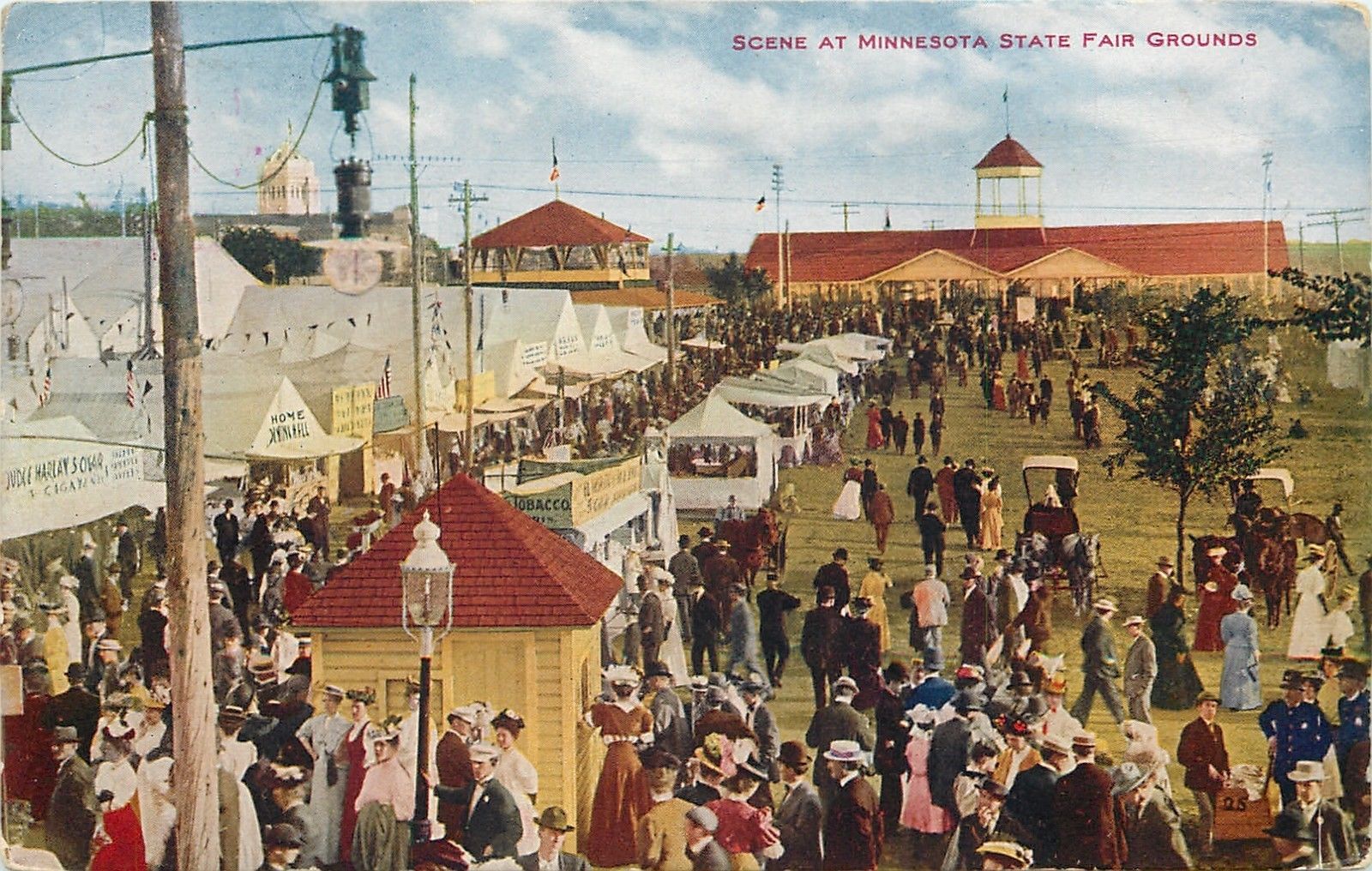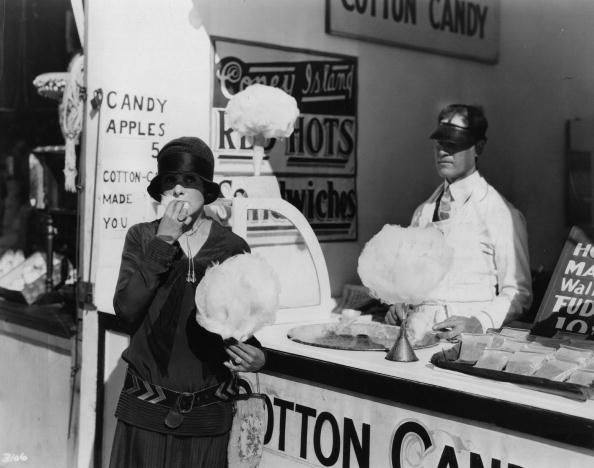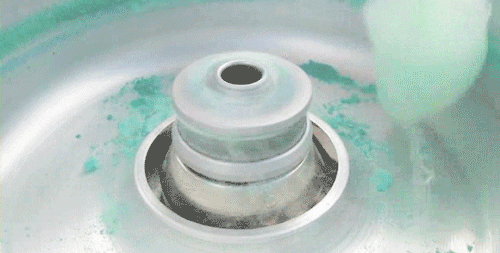Knowing that the inventor of cotton candy was William Morrison, an American dentist living in the late 19th century, most of us would seem to question his morality. Aren’t the sweet sugar candies going to cause tooth decay early on, and that’s why their parents pay the dentist?
But that doesn’t seem to be the case.

William Morrison, an American dentist invented cotton candy.
To see why Morrison invented the cotton candy machine, we have to go back to the 1900s to get its context.
This is the time when states in the United States continuously hold fairs that last all summer. There you can find all sorts of children’s games, from ferris wheels, giant slides, circuses, outdoor performances and indispensable snacks and candies.
From cornflakes, popcorn, funnel cakes, caramelized apples to pretzels and snow cones… these traditional dishes are still served at street fairs in the US all the way up. up to this day.
What they all have in common is that they are all very sweet, contain a lot of sugar and are extremely appealing to children. As a dentist, Morrison knows that, of course. He seemed to be wondering: How to create a sweet dish that looks huge and eye-catching, but has less sugar and fewer calories than traditional treats?


Traditional dishes in fairs in America.
A cotton candy can clearly serve that purpose. It is essentially just a teaspoon of sugar but is whipped up with more than 90% of the remaining volume as air. One cotton candy can therefore look huge, but contains only 105 kcal compared to 230 kcal for a pack of popcorn, 290 kcal for caramelized apples, 350 kcal for cornbread and 730 kcal for funnel cake.
The amount of sugar in a cotton candy can also be 12 times less than a can of regular soft drink.
Furthermore, the cotton candy fibers create a very large contact surface with taste receptors on the tongue. They look bigger, and also stimulate the taste buds better. Along with a dose of sugar, cotton candy can satisfy children many times more than other candies.
So this is obviously a good invention for the kids. They provide a healthier alternative to other high-sugar foods. Of course, then they will have to go to the dentist less often.

When he first introduced cotton candy at a fair called the Louisianan Purchase Show in 1904, Morrison sold nearly 70,000 cotton candy and made him $17,000. Working out at the current rate, that’s over half a million dollars, $560,000 to be exact, a large enough amount for him to think about closing his dentist’s shop.
But how exactly did Morrison invent cotton candy?
In fact, before cotton candy was invented, European chefs from the 15th century discovered an important property of sugar that enabled them to turn it from solid to liquid and then pulled back into solid fibers. In Vietnam, we know a version of this type of candy called candy.
Specifically, candies are made from granulated, crystalline sugar called sucrose. They are essentially glucose and fructose molecules linked together by a chemical bond.
When you use heat to heat sugar, this chemical bond is broken and the small sugar molecules are released from their crystal lattice. If you continue to heat these sugar molecules, they will decompose further, releasing each atom that makes up the sugar including: carbon, hydrogen and oxygen.

Chefs in 15th-century Venice used their forks, dipped in melted sugar and pulled them quickly to form strands of sugar that could be used to decorate sweet treats.
The hydrogen and oxygen atoms recombine to form water, causing the sugar to flow out into a liquid form. And carbon can clump into larger lumps. If you continue to cook until the water evaporates, the carbon will start to burn and you will see coal appear.
However, if you just heat the sugars to the point where they liquefy and stop the flame, you can pull them out into fibers. Chefs in 15th-century Venice used their forks, dipped in melted sugar and pulled them quickly to form strands of sugar that could be used to decorate sweet treats.
Even the wedding cake of the French emperor Napoleon was decorated with sugar threads like this. Hundreds of years ago, such an artistic dessert appeared only at parties for the rich.

Until the 20th century, decorative thread was only available at parties of the aristocracy.
It was not until the early 20th century that William Morrison popularized spinning sugar and raised it to a new level with sugar spinning machines. The charm came from his collaboration with a candy maker named John Wharton.
From 1899 they improved a number of candy machines and began to work on a machine that spun sugar into yarn, instead of chefs making it by hand. Instead of melting sugar in a pan, Morrison and Wharton thought they could do it with a funnel that heats wire around it with an electric current.
If using a fork to pull sugar yarn was too laborious and manual, Morrison and Wharton designed a motor to rotate the sugar hopper, using centrifugal force to propel the sugar fibers through small holes.

When the speed of the funnel was increased to more than 3,000 rpm, Morrison and Wharton found they could create ultra-thin sugar fibers, as thin as 50 micrometers, equivalent to the hairs on the head.
The sugar fibers encountering cold air will quickly cool down, recrystallizing into an amorphous solid. Morrison and Wharton were able to use a stick and collect all of the yarn while they were circling the machine’s rotating cage.
They originally called these crystals “fairy yarn” because they look white, huge and very eye-catching. This name is still given to cotton candy in Australia. In other countries, cotton candy is also called by very catchy names such as: “dragon beard” in China, “sugar silk” in the Netherlands and “Old Ladies’ Hair” in Greece.
Food engineering professor explains the principle of making cotton candy
But cotton candy is not just an invention that will satisfy children and adults if they want to relive their childhood. The principle of creating amorphous crystals of the cotton candy machine is also applied by scientists to the creation of capillary systems.
In their study, doctors at Cornell University and New York-Presbyterian Hospital found that the size and arrangement of cotton candy fibers are very similar to the capillary system in the human body.
Using a mechanism similar to a cotton candy machine, the scientists were able to create protein scaffolds and blood vessels for artificial meat culture. They can also use it to create organ tissues that can be used in transplants.
And that is the history, as well as the present and the future, of cotton candy.
Check out Howstuffworks, Nationalgeographic, BytesizeScience
.
